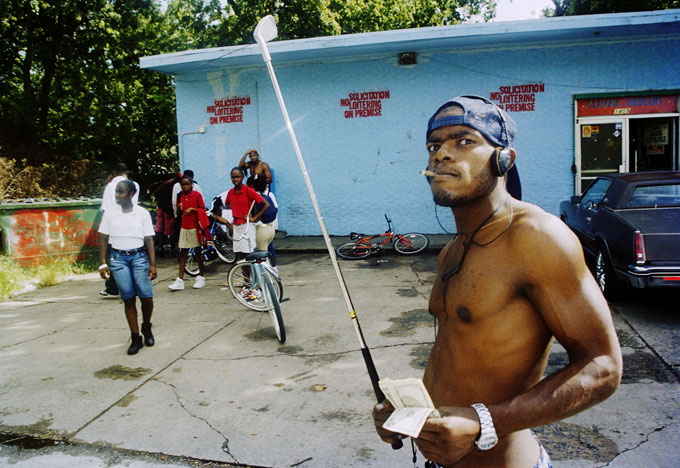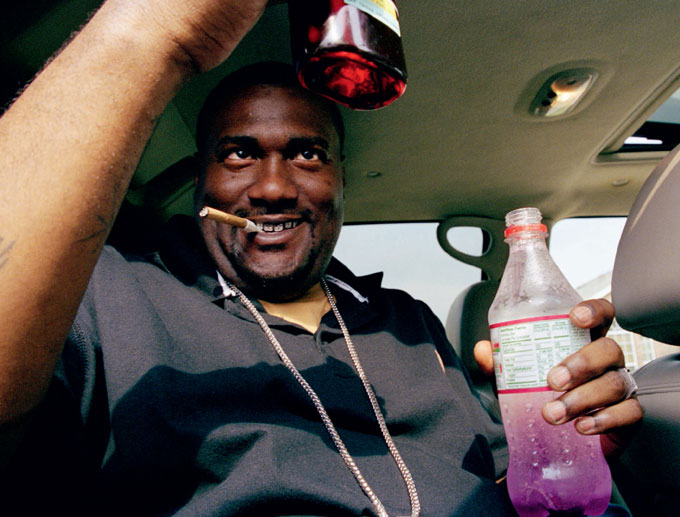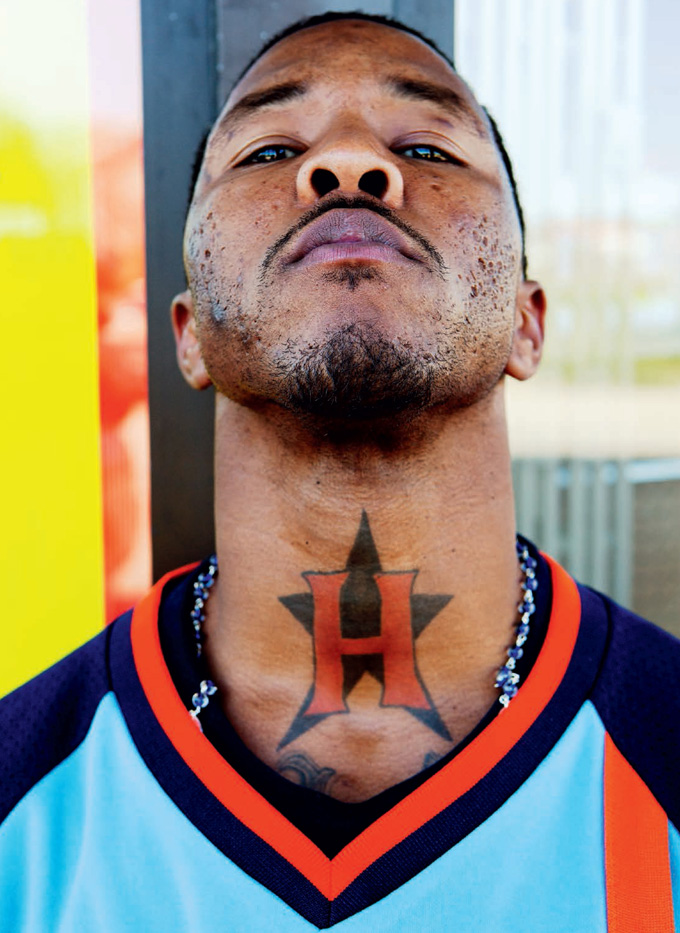by ANDY BETA
The new book “Houston Rap,” makes it clear that by the time the city’s rap scene began attracting national attention, its roots were already strong.
Yet that success—which has only been strengthened over the years—has never really gone to the scene’s head. An evocative new photography book Houston Rap (Sinecure Books) argues that by the time the Houston rap scene began attracting attention in 2005, “the foundations of the city’s rap economy were so strong that little really changed.” Shot by photographer Peter Beste and featuring interviews conducted by writer Lance Scott Walker, the book project began right before Houston rappers like Slim Thug, Chamillionaire, Mike Jones, and Paul Wall began to score nationwide hits. “I wanted to document the neighborhoods where many of the artists came from, most of which were being gentrified and changed by outside money at an alarming rate,” said Beste, whose previous book looked at Norwegian heavy metal.

(“Tiger Woods of the Hood,” Fourth Ward, 2005)
When Houston’s hip-hop scene developed in the early eighties it was vastly overshadowed by New York City and Los Angeles, the epicenters of the genre. And that remove worked to the music’s benefit. “Houston developed their own take on the art form in the decades that they were left on their own with little outside attention,” says Beste, who grew up in the city’s suburbs. “This isolation gave them a fresh perspective and the opportunity to succeed on their own terms outside the major music industry.” And despite Houston’s unchecked sprawl, the scene developed a nurturing sense of unity. “In New York, you got the separate boroughs and the West Coast didn’t have that camaraderie because of the Bloods and the Crips,” said Bun B, the rapper who is the scene’s unofficial eminence grise. “But in Houston we had a different level of solidarity. It didn’t make any sense for us to be against each other when everybody else was against us.”
Favoring a slower, more psychedelic sound than their contemporaries in the northeast and the west coast, Houston rappers often focused on topics like candy-painted cars, diamond-encrusted grills, and cough syrup-infused “drank.” Underneath all that flash, though, one can often find an unsparing account of inner-city desperation. “The cars and chains and drank are what people see when they take a glance, but there are so many layers beneath that,” Walker said. The book goes to great lengths to document the harsh realities of life in neighborhoods like South Park, Fifth, and Third Wards. “You get to look into the eyes of these people beyond the cars and jewelry,” said Bun B, who wrote the book’s introduction. “The photos are very stripped-down; you get to see the essence of the individuals. It’s not the glitzy, camera-ready, politically correct side of hip-hop. It’s a street level, behind closed doors access to the scene.”

(E.S.G., Missouri City, 2005)
The figures portrayed in the book—who range from luminaries like Scarface, Devin the Dude, and Bun B’s late partner Pimp C, to lesser-known rappers like Kyu Boi, E.S.G., and Klondike Kat—are almost invariably shot within contexts that bring into stark relief the city’s inequities. Houston Rap is filled with shots of abandoned storefronts, run-down community centers, and low-rent strip clubs (which are crucial for breaking many regional rap hits). The text addresses various factors that afflict the African-American communities throughout Houston, ranging from the speculative real estate boom that has recently gentrified the Fourth Ward to health issues. “We lead the numbers in all of the bad statistics… the heart disease, the high blood pressure, all the cancers,” says Justice Allah of the South Park Coalition in one of the book’s dozens of interviews. “There’s just nothing really in the neighborhood to make it convenient to have good health.”
Beste says that over the course of the decade he spent working on Houston Rap, he was struck by “just how vicious and unrelenting the police state and the prison-industrial complex is in these neighborhoods. These kinds of neighborhoods are deliberately targeted to be disadvantaged by keeping them unhealthy and uneducated, and to fill the private prisons. If there’s anything I want the average inner-city Houston resident to take away from this book, it’s to empower themselves by learning that they don’t have to fall into this trap.”

(Macc Grace a.k.a. Dat Boy Grace 2008)
